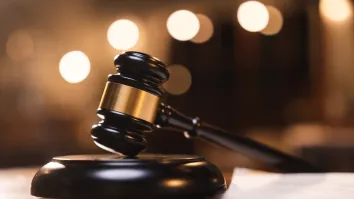Noda stresses need for restart of Oi reactors despite ongoing investigations
Prime Minister Yoshihiko Noda has stressed the need to reactivate two idled reactors at the Oi Nuclear Power Plant in Fukui Prefecture despite the fact that the investigations into the crisis at the Fukushima No. 1 Nuclear Power Plant are still under way.
During a press conference on June 8, Noda declared that "Even an earthquake and tsunami like the ones that hit Tokyo Electric Power Co. (TEPCO)'s Fukushima No. 1 Nuclear Power Plant wouldn't lead to damage to the reactor cores." However, the investigation committees of the government and the Diet have yet to conclude their probes into the Fukushima nuclear disaster, and measures such as the introduction of seismic isolated buildings -- which serve as an on-site command post in case of a nuclear accident -- are still on their way. The Oi nuclear plant has not seen its own seismic isolated building completed yet.
"Why (doesn't the prime minister) wait until he receives reports from the Diet's investigation committee before restarting the reactors?" said Kiyoshi Kurokawa, chairman of the Diet's Fukushima Nuclear Accident Independent Investigation Commission (NAIIC).
Following the outbreak of the Fukushima nuclear crisis, which was triggered by the Great East Japan Earthquake and tsunami in March 2011, the Nuclear and Industrial Safety Agency (NISA) prescribed what it calls "emergency safety measures" later that month, which are designed to cool down reactors stably even if all power sources are lost to an earthquake and tsunami. At the Oi Nuclear Power Plant, measures were taken to protect nuclear reactor buildings from submergence and power supply cars were installed in an upland area 33 meters above the sea level.
Kansai Electric Power Co. (KEPCO), the operator of the Oi nuclear plant, subsequently submitted to the NISA the primary safety assessment as part of its stress test on the facility as a prerequisite for the restart of the plant's No. 3 and No. 4 reactors. In the assessment, KEPCO insisted that even if an earthquake of 1,260 gals -- 1.8 times greater than predicted -- and an 11.4-meter-high tsunami hit the facility, the reactor cores would not be damaged. The NISA and the Cabinet Office's Nuclear Safety Commission of Japan approved the assessment, even though the projected height of the tsunami is only the addition of the previously predicted height of 1.9 meters and the height that surpassed the pre-disaster prediction at the Fukushima No. 1 nuclear plant, or 9.5 meters.
The government indicated in April this year three criteria for reactivating idled reactors. However, two of the criteria correspond to the emergency safety measures and the primary safety assessment that had already been implemented at the Oi plant. The remaining criterion was medium- and long-term measures to boost credibility, which the government said can be submitted in the form of an execution plan if they have yet to be implemented.
One of the pillars of the medium- and long-term measures is the development of seismic isolated buildings at nuclear power complexes. The seismic isolated buildings were introduced after the Niigata Chuetsu Offshore Earthquake in 2007, when the door to the command post at TEPCO's Kashiwazaki-Kariwa nuclear power station in Niigata Prefecture failed to open, hampering initial responses. In the Fukushima nuclear crisis, the seismic isolated building served as the only stronghold for efforts to contain the disaster at the Fukushima No. 1 nuclear plant. KEPCO maintains that it will complete the introduction of a seismic isolated building at the Oi nuclear plant by fiscal 2015.
Meanwhile, an off-site center for the Fukushima No. 1 nuclear plant, which was supposed to serve as the base to respond to the nuclear disaster from outside the plant's compound, did not work because the rising radiation levels at the center prevented workers from using it. While the off-site center was only five kilometers away from the damaged nuclear power plant, the center was not equipped with air cleaning filters, allowing radioactive substances to come indoors. As a result, workers were forced to evacuate to the city of Fukushima, about 60 kilometers away from the stricken plant, four days after the outbreak of the nuclear disaster. Despite these lessons, the Oi nuclear plant's off-site center -- located about seven kilometers away from the plant -- is still void of air cleaning filters.
Kazuhiko Kudo, a research professor at Kyushu University, said, "The government's criteria ensure a certain level of safety, and I can understand (the prime minister's decision) that took a potential power shortage seriously. Incessant efforts are necessary to enhance safety levels."
https://mainichi.jp/english/english/newsselect/news/20120609p2a00m0na013000c.html








![Cross Domain [Manu + SBR + ABF + ABR + FMCG + HBR + ]](https://cmg-qa.s3.ap-southeast-1.amazonaws.com/s3fs-public/styles/exclusive_featured_article/public/2025-01/earth-3537401_1920_4.jpg.webp?itok=WaRpTJwE)
![Cross Domain [SBR + ABR]](https://cmg-qa.s3.ap-southeast-1.amazonaws.com/s3fs-public/styles/exclusive_featured_article/public/2025-01/pexels-jahoo-867092-2_1.jpg.webp?itok=o7MUL1oO)









 Advertise
Advertise


